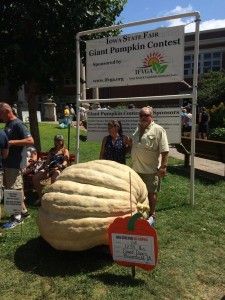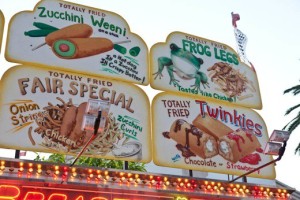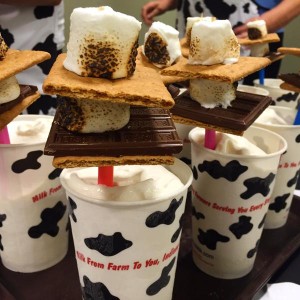By: Elizabeth Clark
In the United States, the months of July-October are noted for a transition in seasons. The sweltering hot days of summer turn into the crisp cool days of fall; with this comes a change in the types of foods we customarily eat. Menus across the country swap out summer items like watermelon gazpacho for festive fall pumpkin chili.
One category of food that is prevalent during this time of year is fair food. Across the United States, county and state fairs pop up bringing with them a unique selection of foods that vary from region to region. But how did food become such a staple of the fair-going experience?

Crystal Palace. Licensed under Public Domain via Commons
The first world’s fair was held in 1851 at the Crystal Palace in London. The goal of the world’s fair was to excite and inspire people by letting them explore a world outside of their everyday experience. One way the world’s fair provided people with new experiences was by offering the patrons a variety of authentic cuisines from exotic locals such as Morocco, Turkey, and China.
By 1863, the World’s Fair, hosted in Chicago, had begun to have an undeniable impact on America’s food culture. Americans were introduced to new foods such as tamales and Vienna beef hotdogs. To this day, these items remain steadfast staples served at fairs countrywide. Other innovations, like cold breakfast cereal, chewing gum, and pancake mix, would continue to shape American food culture for generations to come.

Picture: Jim Waterson Buzzfeed
The American county fair had been in existence since the early 19th century as well. It began as a way to promote modern farming. The fairs featured a variety of activities like livestock judging, domestic arts showcases, as well as innovations in technology and techniques that were designed to educate people in the field of agriculture.
A major event that took place at the county fairs were 4-H food competitions where youths members of the 4-H club were encouraged to bake, can, pickle, and preserve foods which were then judged against a set of standards and awarded a ribbon. These competitions fostered youth learning about the importance of ingredient functionality as well as proper processing techniques for producing wholesome food.
Today, fair food has evolved into a whole new genre of food culture. The menu of items one can devour at the fair not only includes tried and true classics, but innovative food oddities that are sure to please the pallet. New age creations like fried coca cola and Kool-Aid pickles are springing up around the nation, with each region having featured items unique to the area.

Picture: Shannon Cottrell
Despite these items being a far cry from the debut of chewing gum, they still embody the true spirit of the original world’s fair: they inspire the public by providing them with experiences they have never had before. Foods like fried beer and stew on a stick show how processing techniques are evolving to create food items we once thought incapable of existing. Other oddities like the Krispy Kreme donut burger or chocolate covered bacon showcase how our perceptions of flavor are evolving to crave combinations of salty-sweet foods. Fairs even debut unheard of food ingredients such as crickets and mealworms that may shape the cuisine trends of the future.

Picture: http://isfblog.com/
To the untrained eye, it may appear that fairs have evolved into more of a venue for entertainment than knowledge. However, if you look closely you’ll see that state and county fairs still serve their original purpose of fostering education and driving innovation in food culture. The 4-H program’s events help teach America’s youth valuable food science skills that will be of use to them later in life as they venture into careers within the food sector. Likewise, the exchange of ideas regarding recipes and processing strategies of fair food is helping to drive the innovation of new food products, flavors, and trends. So next time you attend a county or state fair, make sure you partake in the rich food culture that has and will continue to shape America’s food industry.
Sources:
http://www.crystalpalace51.org/






Hi, I would like to cite your article, but I can`t find the year this article was published. Can you help me?